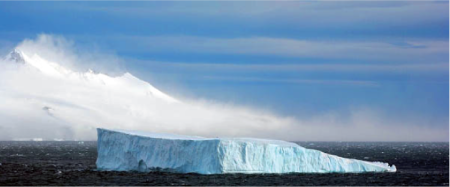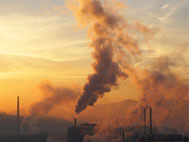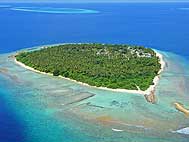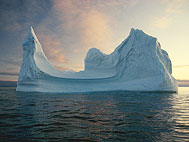| SEARCH |
-

Nov 17, 2015
Reflections on a three-decade legacy
The International Geosphere-Biosphere Programme (IGBP) will come to a close at t...
-
Nov 17, 2015
Use of and access to content on this website
Text and images produced by IGBP in house are free to use with appropriate credi...
-
Nov 12, 2015
Bella Gaia performance and panel discussion to mark IGBP's closure
A musical performance by Bella Gaia will celebrate the achievements and legacy o...
-

Towards Future Earth:
evolution or revolution?
During its three decades of existence, the International Geosphere-Biosphere Pro...
-
A personal note on IGBP and the social sciences
Humans are an integral component of the Earth system as conceptualised by IGBP. João Morais recalls key milestones in IGBP’s engagement with the social sciences and offers some words of advice for Future Earth.
-
IGBP and Earth observation:
a co-evolution
The iconic images of Earth beamed back by the earliest spacecraft helped to galvanise interest in our planet’s environment. The subsequent evolution and development of satellites for Earth observation has been intricately linked with that of IGBP and other global-change research programmes, write Jack Kaye and Cat Downy .
-
Deltas at risk
Around 500 million people worldwide live on deltas, but many of the world's deltas are sinking due ...
-
Climate change: the state of the science
A new data visualization released on the first day of the plenary negotiations at the UNFCCC’s clima...
-
Climate Change:
the State of the Science
Videos now online from the Stockholm public forum to mark the launch of the IPCC's climate report, 2...
Photochemistry of ozone over the western Pacific from winter to spring
Kondo Y, Nakamura K, Chen G, Takegawa N, Koike M, Miyazaki Y, Kita K, Crawford J, Ko M, Blake D R, Kawakami S, Shirai T, Liley B and Ogawa T (eds)
Vol 109; D23S02; 19 pp.

Aircraft measurements of ozone (O3) and its precursors, including NO, CO, H2O, and nonmethane hydrocarbons (NMHCs), were made over the western Pacific in the 20°– 45°N latitude range in January and April–May 2002 during the Pacific Exploration of Asian Continental Emission (PEACE)-A and B campaigns. These measurements have provided data sets that, in combination with Transport and Chemical Evolution over the Pacific (TRACE-P) data taken in March 2001, enable studies of O3 photochemistry from winter to late spring. A photochemical box model is used to calculate ozone formation (F(O3)) and destruction (D(O3)) rates constrained by the observed species concentrations. The values of F(O3) and D(O3) are controlled directly by NO, J(O1 D) (O3 photolysis frequency), H2O, OH, and HO2. Changes in HO2 concentration cause corresponding changes in both F(O3) and D(O3), leading to their coupling. Concentrations of these species, which are strongly influenced by photochemistry and transport from the Asian continent, underwent large seasonal variations. In the boundary layer (0–3 km), NO was much higher in January than in April–May, because of stronger winds, lower convective activities, and lower oxidation rates by OH in winter. The net O3 formation rate, given by P(O3) = F(O3) − D(O3), was largely positive in the boundary layer at 30°–45°N (1.5 − 4 ppbv d−1) in January, mainly because of high NO and low H2O values. Net O3 formation continued from January to the end of March, demonstrating that the western Pacific is an important O3 source region during this season. Net O3 formation nearly ceased by late April/May because of the decrease in NO and the increase in H2O. In the latitude range of 20°–30°N, P(O3) in the boundary layer was positive in January and turned negative by March. The earlier transition was mainly due to lower NO and higher H2O concentrations, combined with weaker transport and higher temperatures than those at 30°–45°N. The upper troposphere (6–12 km) has been shown to be a region of net O3 formation throughout most of the year because of high NO and low H2O. The present study illustrates that a decrease in the net O3 formation rate at 20°–45°N latitude from winter to late spring is explained systematically by the increases in J(O1 D), H2O, OH, and HO2 (primarily due to increases in temperature and solar radiation) and the decrease in NO (primarily due to decrease in transport from the Asian continent). Differences in the seasonal variation of O3 photochemistry observed over the North American continent are interpreted in terms of the differences in factors controlling O3 formation and destruction.

IGBP closed at the end of 2015. This website is no longer updated.
-

Global Change Magazine No. 84
This final issue of the magazine takes stock of IGBP’s scientific and institutional accomplishments as well as its contributions to policy and capacity building. It features interviews of several past...
-

Global Change Magazine No. 83
This issue features a special section on carbon. You can read about peak greenhouse-gas emissions in China, the mitigation of black carbon emissions and the effect of the 2010-2011 La Niña event on gl...
-
INTERGOVERNMENTAL PANEL ON CLIMATE CHANGE:
How green is my future?
UN panel foresees big growth in renewable energy, but policies will dictate just how big.
-
UK:
'The Anthropocene: a new epoch of geological time?'
Royal Society, Philosphical Transactions A




















